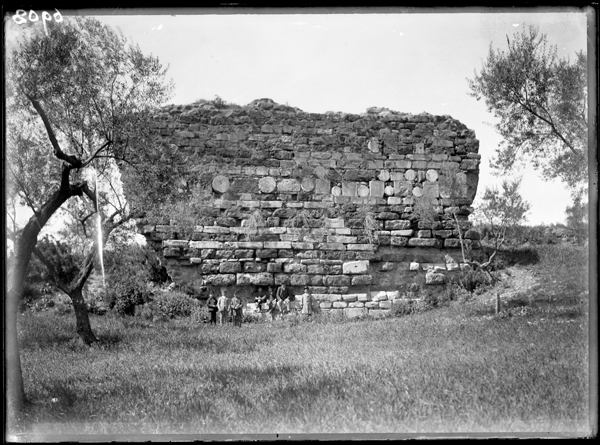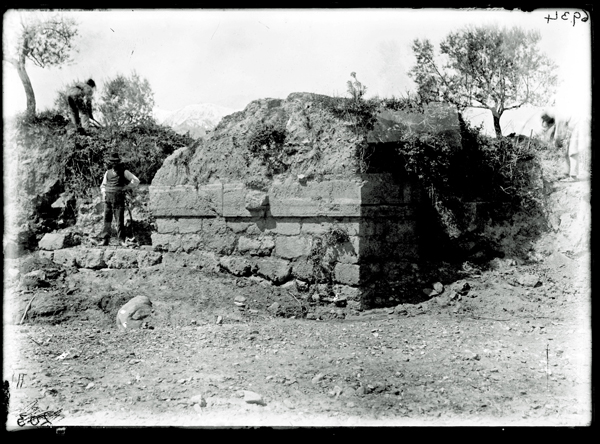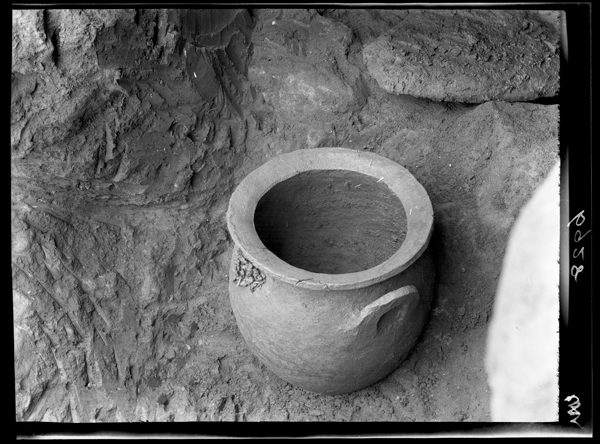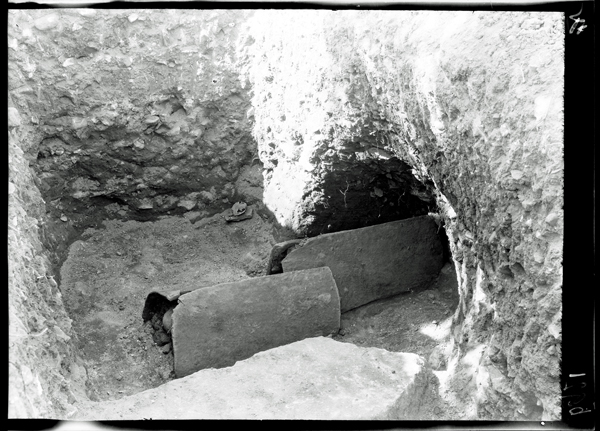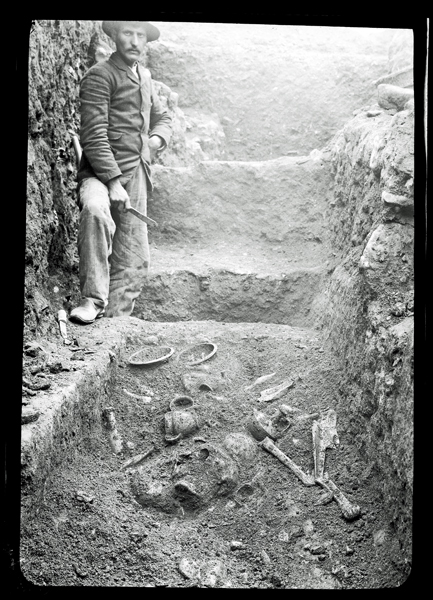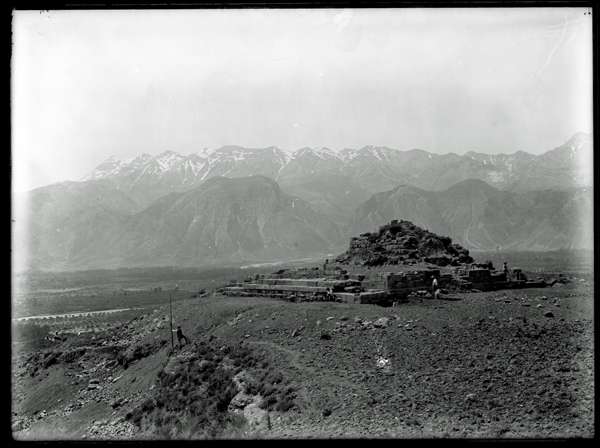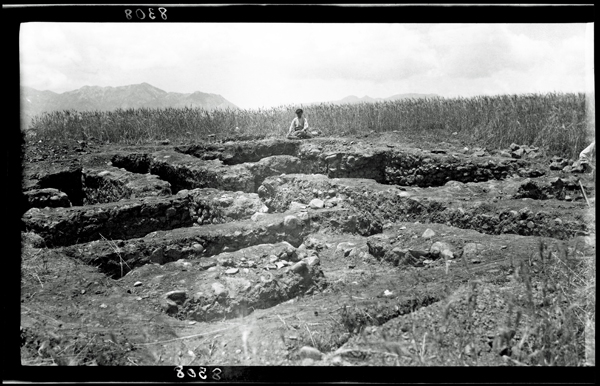Sparta Begins: 1906-1910 BSA Sparta Excavations in the SPHS Collection
The investigation of Laconia and British School at Athens (BSA) excavations centring on Sparta was one of the most extensive and productive projects carried out by the BSA in the early 20th century. By 1904, the BSA had turned its archaeological focus from Crete to Laconia, beginning with a scheme to explore systematically the whole province of Laconia (see Archive Story: Sparta Groundwork). The Laconia Excavation Fund was established to finance this new work in 1904 and that year’s Annual Report, published in the Annual of the British School at Athens (ABSA), recorded £50 raised. More funds were added the following year, bringing the total to £593 and 14 shillings. Three events converged in early 1906: the conclusion of excavations at Palaikastro in Crete with only a short 8-day season to clear “doubtful points”, a large portion of Laconia already explored (although more exploration would continue), and sufficient money available in the Laconia Fund. Excavation could begin at Sparta.
Excavations took place over five years, beginning on 19 March 1906 and ending on 20 June 1910. This work generated a large number of photographs, many donated by the BSA to the Society for the Promotion of Hellenic Studies (SPHS) Photographic Collection. A portion of the SPHS collection returned to the BSA in 2003, ninety-seven years after the beginning of excavations at Sparta: negatives, slides, and index cards. The 1906-1910 Sparta collection is significant: a total of 599 items, although many are duplicate images. In addition, there are 228 further duplicates in large print format that once formed part of the study collection of photographs, collected by the BSA prior to 2003.
One of the first tasks the BSA team undertook in 1906 was to survey of the extent of the ancient city, tracing walls and mapping standing structures. The state plan of the site began at this time by Mr W. Sejk, the same Austrian surveyor who had helped Hasluck with plans of the fortresses at Zarax and Epidaurus Limera the previous year. The final version of the site plan would appear in the 1907 Sparta excavation report. During that first year, some small excavations took place: among them were test pits to determine the remains of earlier walls, the altar on the banks of the Eurotas river and various burials including a pithos burial near the Heroön.
However, the main focus of excavation from 1906 to 1909 was the Sanctuary of Atremis Orthia, located near the banks of the Eurotas river, east of the modern town, but still within the walls of the ancient city. The progress of the excavations can be charted in both the regular yearly excavation reports and in photographs from the BSA SPHS image collection – either donated by the BSA or taken by John Penoyre who visited the site in 1907. Excavations uncovered the Archaic temple, later temples and altars and various other structures, including Hellenic buildings (described as houses), a Byzantine tile burial and a large Roman ‘circus’ or amphitheatre that had been drawn by the French Expedition de la Morée and published in 1836. The sanctuary was the source of many of the spectacular and iconic finds: Archaic carved ivories, terracotta masks and tens of thousands of flat cutout lead figurines. Other areas continued to be investigated including trial trenches in the Sanctuary of Athena Chalkioikos on the Acropolis, more trenches in the theatre, and the excavation of Hellenistic tombs to the southeast of the theatre as well as miscellaneous investigations in outlying areas.
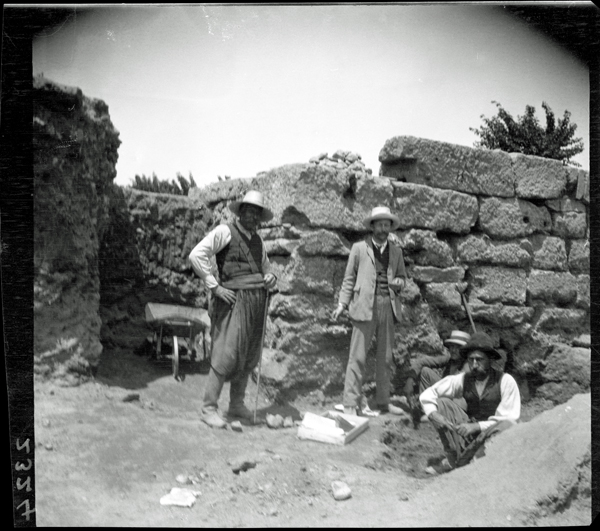
BSA SPHS 01/0737.2324. Sparta, Artemis Orthia: S.E. Corner of the Artemision Temple, possibly with R.M. Dawkins (photographed by J. Penoyre 1907)
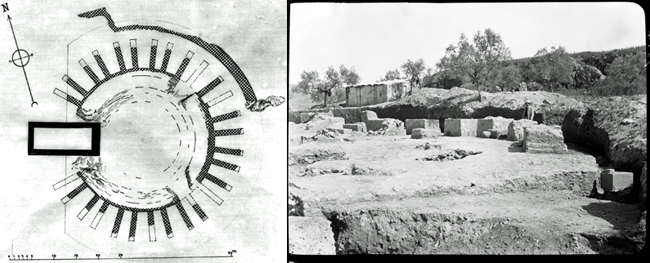
Artemis Orthia. Left: BSA SPHS 01/2524.6806. Plan of the amphitheatre from Expédition Scientifique de Morée: Ruines de la Morée (1836); Right: BSA SPHS 01/5015.7814. Roman amphitheatre
By 1908 the excavations had unearthed an immense amount of material for study. Many of these preliminary studies were published in the 1908 and 1909 excavation reports in the ABSA. J.P. Droop focused his attention on the pottery while J. Farrell detailed the terracottas and A.M. Woodward – continuing work begun by H.W.J. Tillyard – studied the inscriptions. A note on a marble head by AJ.B. Wace as well as a report on the hoard of Hellenistic coins he had excavated that year also appeared in the publications. In 1908, Guy Dickins reported on the excavations on the Sparta Acropolis at the Sanctuary of Athena Chalkioikos. Also in1908 Dickins published a popular article in the Burlington Magazine on the Art of Sparta, liberally illustrated with ivories, lead figurines and terracotta masks from the Sanctuary of Artemis Orthia as well as objects from other areas investigated in the ancient city.
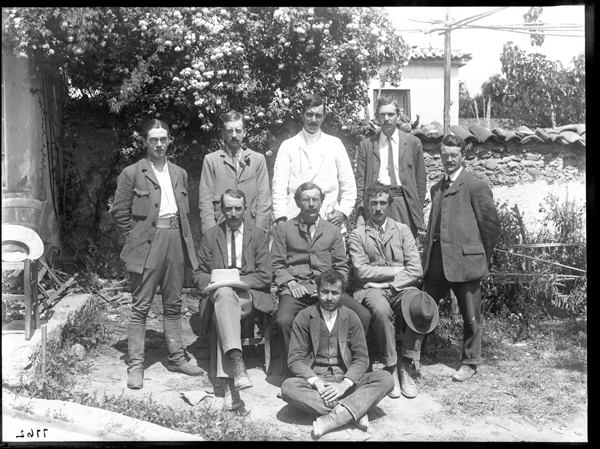
BSA SPHS 01/2948.7762. Sparta excavators, 1908: Standing left to right: J. Farrell, A.M. Woodward, G. Dickins, J.P. Droop and architect W. Harvey. Seated from left to right: A.J.B. Wace, R.M. Dawkins, and M.S. Thompson. Sitting on ground: Ι. Κατσαράκης, ‘mender’ from Palaikastro.
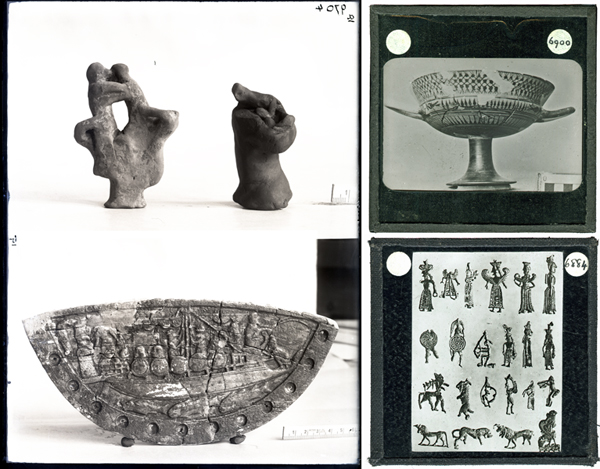
Left: BSA SPHS 01/4754.9704. Sparta, Sanctuary of Artemis Orthia: (top) terracotta Eileithyia figurines and (bottom) Ivory relief of a Warship; Right Top: BSA SPHS 03/2618.6900. Sparta, Sanctuary of Artemis Orthia: Laconian kylix; Right Bottom: BSA SPHS 03/2602.6884. Sparta, Sanctuary of Artemis Orthia: Lead figurines
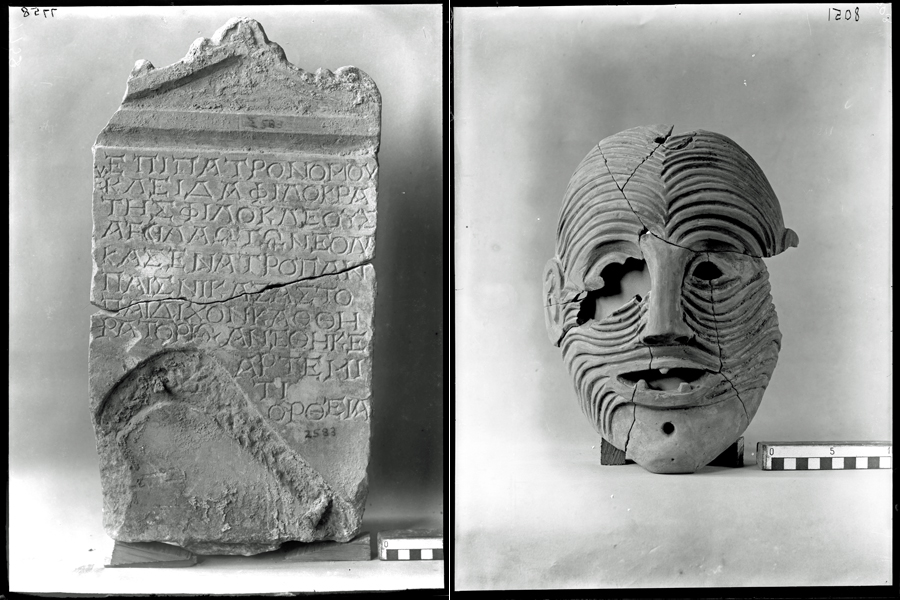
Left: BSA SPHS 01/2944.7758. Sickle inscription No. 2583 from the Sparta Sanctuary of Artemis Orthia, Stele of Philokrates; Right: BSA SPHS 01/3051.8051. Sparta, Sanctuary of Artemis Orthia: Terracotta mask
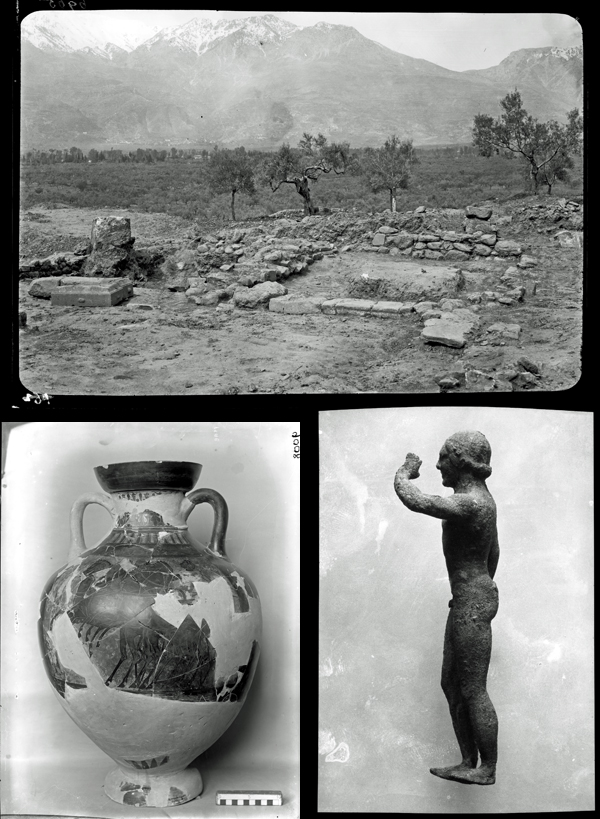
Top: BSA SPHS 01/2682.6965. Sparta: Temple of Athena Chalkioikos; Bottom Left:
BSA SPHS 01/3006.8006. Sparta: Panathenaic amphora from the Temple of Athena Chalkioikos. Bottom Right: BSA SPHS 01/4459.9144. Sparta, Sanctuary of Athena Chalkioikos: Bronze figure of trumpeter, side view
In 1909, it was thought that the majority of work had been completed at Artemis Orthia and the excavators turned their attention to more trial pits in the ancient city as well as other sites in the outlying area, not least the Menelaion. The shrine of Helen and Menelaos (the Melelaion) with its spectacular outlook is located slightly south of Sparta on the a hill on the east bank of the Eurotas river. Excavations of the structure indicated that it was rebuilt in the 5th century BC, although artefacts unearthed dated back to the 7th century with a scattering of Mycenaean. Excavations concluded that there was no evidence that it was either an altar-tomb or a small temple, although they suspected the latter. Explorations in 1909 on the peak located to the east of the Menelaion uncovered traces of a Mycenaen house which was further explored in 1910 and would be the focus of later excavations by Hector Catling in the 1970s when it was referred to as Dawkins’ House.
The final publication, The Sanctuary of Artemis Orthia at Sparta, came out in 1929, nineteen years after the excavations ended with the significant intervention of WWI. Many who worked at Sparta served in the war and one BSA scholar, Guy Dickins, died of wounds received in action. By the time the volume on the Sanctuary came out, the BSA had just concluded another productive excavation project at Sparta – a tale for another Archive Story.
Deborah Harlan
British School at Athens
Images from the BSA-SPHS collection are available on the BSA’s Digital Collections page.
Click here for more BSA Archive Stories.
Further Reading
Bosanquet, R.C. et al. 1905/1906. ‘Laconia: II. Excavations at Sparta, 1906’, Annual of the British School at Athens, 12: 277–479.
Dawkins, R.M. et al. 1906/1907. ‘Laconia: I. Excavations at Sparta, 1907’, Annual of the British School at Athens, 13: 1–218.
Dawkins, R.M. et al. 1907/1908. ‘Laconia: I.-Excavations at Sparta, 1908’, Annual of the British School at Athens, 14: 1–160.
Dawkins, R.M. et al. 1908/1909. ‘Laconia: I. Excavations at Sparta, 1909’, Annual of the British School at Athens, 15: 1–157.
Dawkins, R.M. and Woodward, A.M. 1909/1910. ‘Laconia: I. Excavations at Sparta, 1910’, Annual of the British School at Athens, 16: 1–61.
Dawkins, R.M. (ed.) 1929. The Sanctuary of Artemis Orthia at Sparta: Excavated and Described by members of the British School at Athens 1906-1910. London: Macmillan & Co. (The Society for the Promotion of Hellenic Studies Supplementary Papers, 5).
Dickins, G. 1908. ‘The Art of Sparta’, The Burlington Magazine for Connoisseurs, 14(68): 64–84.

